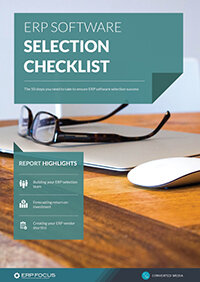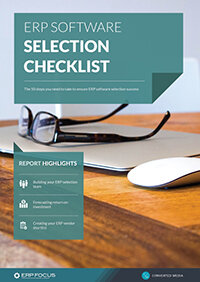5 ERP Selection Tools and How They Can Help Your Project Team
While there are many potential concerns regarding the selection of the ‘right’ ERP system for an enterprise, there are host of ways to lessen the pain associated with the process. Thankfully, today’s ERP selection tools offer a number of well marked paths to keep your selection process moving in the right direction, ranging from virtual product directories, to checklists, to requirements guides and more.
1. ERP Vendor Directories
There are number of useful online directories covering ERP software and related products. These useful utilities usually filter information on the basis of typical ERP operational categories such as CRM, inventory, front and back office, finance, manufacturing, production scheduling, and shipping/delivery management. Being able to filter vendors on operational criteria can give you a head start in the ERP shortlisting process.
2. ERP Product Comparisons
Other sources of useful information regarding ERP product selection can be found in the form of online product comparison tools, as well as through leveraging one or more of the better research firms like Gartner, Forrester Research or IBISWorld. In the latter case, some of this information is available free, but most of these ERP selection tools may require fees-based premiums. However, if you’re deeply in the ERP selection weeds, these outlets can really provide much-needed clarity with a minimum of effort.
Useful Resource: ERP Product Comparison - free comparison tool with over 100 ERP software products
3. Operational Requirements Templates
Regardless of their ‘flat’ nature, good requirements templates can typically provide plenty of grit for the wheel of ERP selection. There are number of good online outlets that can help any enterprise define a solid macro-based process outline that can keep an ERP project manager on the straight and narrow. The good news is that many of these templates can be had for free, so getting started isn’t going to be much of a challenge.
4. Branded Systems Configurators
These selection systems are typically available from the vendors themselves, but whether you are considering Oracle, SAP or other systems, an ability to configure an online set of modules in a linear fashion, can easily translate from one system to another. The goal here is to provide overall intellectual discipline, while not necessarily having to fall prey to one subjectivity or another, but as the old saying goes ‘its better to start somewhere, than not start at all.’
5. Product Selection Checklists
In the same ways that product directories, and systems configurators offer value when executing an ERP selection process, the same thing goes for ERP selection checklists. Again this is a bit of a drill down, when compared with other options, but once you’ve started and have established a direction of movement, the next thing to do is plan the what/where/how and when of your selection process.
So there you go. As usual there are undoubtedly other options when it comes to ERP selection tools, but the goal here is to highlight options that provide a solid path from decision point to selection.
Free white paper

60-Step ERP Selection Checklist
Get the comprehensive checklist for your ERP selection project

Featured white papers
Related articles
-

The best ERP systems for process manufacturing
Consider these ERP systems when selecting your next process manufacturing ERP
-

Secret KPI: Why Your ERP Implementation Team Matters More Than Software
Learn how Godlan ensures successful ERP implementation for manufacturers with proven strategies &...
-

5 ERP pricing definitions you need to understand
Have you mastered the ERP pricing lexicon yet? Getting to grips with these five definitions is a ...



